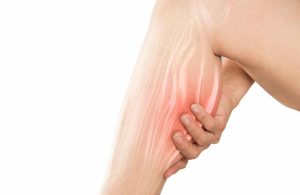
Muscle Spasm in Leg: Causes, Treatment & Prevention
Introduction
Muscle spasm in leg. Have you ever been jolted awake by a sudden, painful cramp in your leg? You’re not alone. Leg muscle spasms—those involuntary, often painful contractions—are incredibly common. Muscle spasm in the leg. Whether you’re an athlete, a busy parent, or someone who sits at a desk all day, these cramps can sneak up on you. But what causes them? And more importantly, how can you treat and prevent them? Let’s break it all down.
What is a Muscle Spasm?
A muscle spasm, also called a cramp, is a sudden, involuntary tightening or contraction of a muscle. It often hits without warning and can last anywhere from a few seconds to several minutes. While any muscle can cramp, leg muscles—especially the calf, hamstring, and foot—are the usual suspects.
Why Legs Are Commonly Affected
Legs are responsible for carrying your weight all day. They’re constantly in motion—walking, running, climbing stairs. This constant use makes them more prone to overuse, fatigue, and spasms.
Causes of Muscle Spasms in the Leg
Dehydration and Electrolyte Imbalance
One of the most common causes. When your body lacks water or essential minerals like potassium, magnesium, or calcium, your muscles can’t function properly, leading to spasms.
Overuse of Muscles
Working out too hard? Running a marathon? Long hours standing or walking? Your muscles might rebel with painful cramps as a way of saying, “Enough!”
Poor Blood Circulation
If blood isn’t flowing well, your muscles won’t get enough oxygen, which can trigger spasms, especially in people with vascular conditions.
Medical Conditions That Trigger Spasms
Some underlying conditions can make you more prone to leg spasms:
Diabetes
High blood sugar levels can damage nerves and blood vessels, both of which play a role in muscle health.
Kidney Disease muscle spasm in leg
This can lead to electrolyte imbalances, which directly affect muscle function.
Neurological Disorders
Conditions like Parkinson’s or multiple sclerosis can interfere with nerve signals, leading to muscle spasms.
Types of Leg Muscle Spasms
Nocturnal Leg Cramps
These occur at night, often disturbing sleep. They’re common in older adults but can happen to anyone.
Exercise-Associated Muscle Cramps
These hit during or right after physical activity, especially when hydration is lacking.
Chronic Muscle spasm in the leg
Some people experience regular, persistent spasms that may require medical treatment.
Symptoms and Diagnosis
Common Symptoms to Watch For
- Sudden sharp pain
- Hard, knotted muscle
- Temporary inability to move the leg
When to See a Doctor
If your cramps are frequent, severe, or accompanied by swelling, redness, or weakness, it’s time to get checked.
Diagnostic Tests for Muscle Spasms
Doctors may order blood tests, EMGs, or imaging to rule out other conditions.
Immediate Relief for Muscle Spasms
Stretching Techniques
Gently stretching the cramped muscle often helps it relax. Try pulling your toes toward you if your calf cramps.
Massaging the Affected Area
Rub the muscle in circular motions to increase blood flow and ease the tightness.
Applying Heat or Cold
Use a heating pad to relax tight muscles or a cold pack to reduce inflammation.
Long-Term Treatment Options
Physical Therapy
A physical therapist can teach you specific exercises to strengthen muscles and prevent cramps.
Medications
Muscle relaxants or nerve pain medications might be prescribed in some cases.
Lifestyle Adjustments
Regular exercise, proper hydration, and avoiding overexertion can go a long way in keeping cramps at bay.
Home Remedies and Natural Treatments
Magnesium and Potassium Intake
Bananas, avocados, and leafy greens are rich in cramp-fighting minerals.
Herbal Teas and Essential Oils
Chamomile tea and lavender oil massages may help relax muscles naturally.
Preventing Leg Muscle Spasms
Stay Hydrated
Water is essential for muscle function. Don’t wait until you’re thirsty!
Proper Warm-Up and Cool-Down
Never skip stretching before and after exercise—it preps your muscles and prevents tightness.
Healthy Diet for Muscle Function
Eat a balanced diet loaded with fruits, veggies, and lean proteins to support strong, cramp-free muscles.
Risk Factors You Should Know
Age and Activity Level
Older adults and very active individuals are more likely to experience spasms due to muscle fatigue or deterioration.
Pregnancy
Hormonal changes and extra weight can put strain on leg muscles, leading to more frequent spasms.
Athletes and Frequent Exercisers
High-intensity workouts can deplete minerals and water, triggering cramps.
Myths About Muscle Spasms
Only Older People Get Them
False! Anyone can get a leg cramp—age doesn’t discriminate.
Drinking Water is Always Enough
Water helps, but without enough electrolytes, hydration alone won’t fix the problem.
Real Stories: Living With Muscle Spasms
Testimonial from a Runner
“I used to cramp up after every marathon. Once I started balancing my electrolytes, the spasms stopped.”
A Senior’s Daily Challenge
“At 70, my leg cramps kept me awake. Gentle yoga and staying hydrated made a huge difference.”
When to Seek Emergency Help
If your cramps are accompanied by:
- Swelling or redness
- Muscle weakness
- Numbness or tingling
Call your doctor. These could be signs of something more serious, like a blood clot or nerve damage.
Leg muscle spasms can be a painful nuisance, but they’re usually treatable and preventable. Whether you’re dealing with them occasionally or they’ve become a regular part of life, a few changes to your routine can bring lasting relief. Listen to your body, stay hydrated, eat well, and don’t ignore the warning signs.
